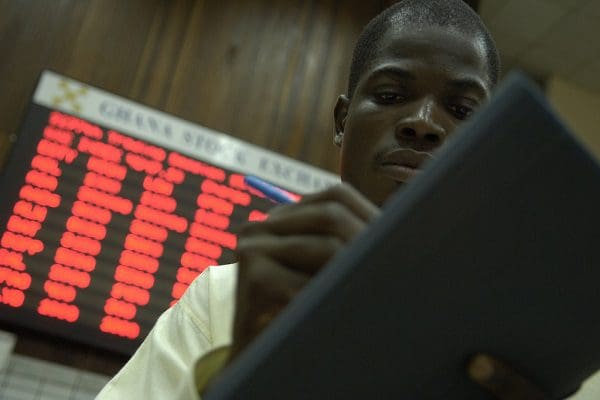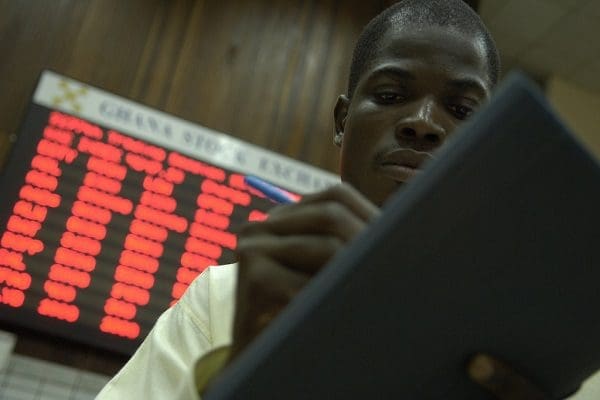
Ghana’s financial markets maintained their impressive momentum into mid-October, building on a spectacular September rally that saw equities surge 11.43 percent as investors responded enthusiastically to the country’s economic stabilization and return to single-digit inflation.
The Ghana Stock Exchange Composite Index added another 14.37 points on Tuesday, October 14, 2025, closing at 8,495.76 points and extending a bull run that has delivered year-to-date returns of 67.09 percent. The GSE Financial Stocks Index gained 6.13 points to settle at 3,959.70 points, reflecting continued optimism about banking sector prospects.
September’s 11.43 percent monthly gain represented one of the strongest single-month performances in recent GSE history, driven by broad-based gains across banking, consumer goods, and industrial sectors. The rally coincided with inflation’s dramatic fall to 9.4 percent in September, marking the first return to single digits in four years and the ninth consecutive month of decline.
The improving macroeconomic backdrop transformed investor sentiment throughout September and into October. Clydestone Ghana led the charge with a remarkable 54.55 percent monthly gain, while GCB Bank surged 40.86 percent and Ecobank Ghana posted a 33.04 percent advance. CAL Bank, Fan Milk, and TotalEnergies all delivered double-digit returns, underscoring the rally’s breadth.
The Bank of Ghana responded to September’s inflation data by cutting its policy rate by 350 basis points to 21.5 percent, signaling confidence in the disinflation trajectory and providing additional fuel for equity valuations. The aggressive rate cut represented one of the central bank’s boldest moves in recent years and reflected improving fiscal dynamics.
Tuesday’s trading session demonstrated this momentum remains intact. Volume reached 1,282,825 shares valued at GH¢5.69 million, with MTN Ghana, Guinness Ghana Breweries, and CAL Bank accounting for the bulk of activity. MTN Ghana alone traded 354,868 shares worth GH¢1.59 million, maintaining its position as the market’s liquidity anchor with a market capitalization of GH¢59.43 billion.
However, the rally showed signs of selectivity. Guinness Ghana Breweries declined 9.59 percent in September, bucking the broader trend, though it recovered on Tuesday with a GH¢0.29 gain to close at GH¢6.30. The divergence highlighted that not all sectors benefited equally from improved economic conditions, with some consumer companies facing margin pressures despite declining inflation.
Total equity market capitalization grew 8.69 percent in September to GH¢162.59 billion, then edged higher to approximately GH¢166.80 billion by mid-October. While impressive in absolute terms, trading concentration remained a persistent feature, with the majority of listed securities, particularly on the Ghana Alternative Market, recording zero transactions on most days.
The fixed income market complemented equities’ strong performance with its own robust showing. The Ghana Fixed Income Market saw trading volume surge 16.33 percent in September, bringing year-to-date volume growth to 55.79 percent. This elevated activity reflected both government financing needs and investor appetite for yields that remained attractive despite monetary policy easing.
Government securities dominated fixed income flows, accounting for 39.52 percent of September trading through notes and bonds, while Treasury bills contributed 38.70 percent and Bank of Ghana bills added 20.98 percent. Corporate bonds represented just 0.80 percent of activity, highlighting the persistent liquidity challenges facing Ghana’s corporate debt market.
Tuesday’s fixed income session saw continued concentration in government securities. The 2023-GC-12 bond maturing February 2, 2038, recorded trading volume of GH¢283.61 million, making it the day’s most actively traded fixed income instrument. Two shorter-dated government notes, maturing in 2027 and 2028, added combined volume exceeding GH¢190 million.
Yields across new government bonds ranged from 15.01 percent to 16.37 percent on Tuesday, still elevated in nominal terms but increasingly attractive in real terms given inflation’s retreat to single digits. Sustained single-digit inflation requires continued fiscal discipline as outlined in the 2025 Budget framework, plus steady foreign exchange market reforms that anchor expectations, analysts noted.
The sell and buy back market, which facilitates short-term liquidity management through repurchase agreements, posted substantial volumes exceeding GH¢530 million across three major securities on Tuesday. This active repo market demonstrated the financial system’s improving functionality and banks’ confidence in using government securities for liquidity management.
Treasury bills maintained steady trading across all tenors, with bills maturing in the fourth quarter of 2025 through the second quarter of 2026 seeing the most activity. The money market’s health reflected investors’ comfort with Ghana’s near-term credit profile and the central bank’s enhanced credibility following its successful disinflation campaign.
Corporate bond trading remained disappointingly thin. Only Ghana Cocoa Board securities showed meaningful activity, with the state commodity marketing board’s 2027 and 2028 bonds trading combined volume of GH¢8.53 million. Other corporate issuers including Letshego, Bayport, and Kasapreko recorded minimal transactions, underscoring the developmental gap between government and corporate debt markets.
The contrast between thriving government securities and dormant corporate bonds illustrated a persistent structural challenge. While government paper offers the combination of attractive yields and acceptable liquidity, corporate bonds require additional credit analysis and offer limited secondary market trading options, relegating them to specialized buy and hold portfolios.
September’s market performance represented more than just strong returns; it reflected a fundamental shift in investor psychology. After years of elevated inflation, currency volatility, and fiscal uncertainty, Ghana’s economic stabilization provided the foundation for sustained capital market development. The 67.09 percent year-to-date equity return through September positioned the GSE among the world’s best-performing exchanges in 2025.
Yet challenges persisted beneath the headline numbers. Trading concentration meant that most of the market’s gains accrued to a handful of large-cap stocks, particularly MTN Ghana, major banks, and select consumer companies. The Ghana Alternative Market remained effectively dormant, with Samba Foods and other GAX-listed firms recording zero trading activity on Tuesday and most other days.
This bifurcated market structure created opportunities for nimble investors while posing execution challenges for those seeking broad-based exposure. The major liquid stocks offered price discovery and relatively easy position adjustment, while smaller companies and alternative market securities traded by appointment only, if at all.
For institutional investors and fund managers, the improving economic fundamentals justified the strong September rally and supported continued optimism. Real yields on government bonds remained attractive even after the central bank’s rate cut, while equity valuations, though no longer cheap, reflected genuine earnings improvements rather than pure speculation.
The question facing investors as October progressed centered on sustainability. Could Ghana maintain single-digit inflation through fiscal discipline and prudent monetary policy? Would continued macroeconomic stability eventually broaden market participation beyond the core liquid stocks? And could the corporate bond market develop the liquidity necessary to offer genuine portfolio diversification?
Tuesday’s trading patterns suggested the momentum remained intact but still concentrated. The same stocks that drove September’s gains continued to attract volume in October, while the majority of listed securities remained sidelined. This pattern could persist until either valuations become compelling enough to drive rotation into smaller names or new listings increase the pool of tradeable securities.
The fixed income market’s trajectory appeared more predictable. Government securities would likely maintain their dominance given financing needs and the limited corporate issuance pipeline. Yields might gradually compress if inflation stays contained and fiscal metrics continue improving, offering capital gains to current bondholders while reducing future returns for new investors.
Ghana’s financial markets entered the final quarter of 2025 with impressive momentum and improving fundamentals. September’s spectacular gains validated investor optimism about economic stabilization, while early October trading demonstrated this wasn’t merely a one-month phenomenon. The challenge ahead involves translating macro stability into broader market development that extends beyond a handful of liquid securities.
